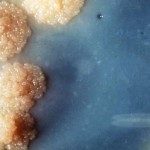 Doctors Without Borders (MSF) released a new publication of DR-TB Drugs Under the Microscope, showing that just 2 percent out of the 150,000 people with drug-resistant tuberculosis have access to the new, better treatments for the disease.
Doctors Without Borders (MSF) released a new publication of DR-TB Drugs Under the Microscope, showing that just 2 percent out of the 150,000 people with drug-resistant tuberculosis have access to the new, better treatments for the disease.
It has been two years since the medical industry introduced two new drugs for treating tuberculosis (TB). These are conditionally approved, but they are more effective in treating TB than traditional drugs.
These TB regimens include bedaquiline (from Johnson & Johnson) or delamanid (from Otsuka). Neither of these has been specifically created to treat TB, but both of the drugs have been re-purposed and proved efficient in treating the disease.
In addition, the new treatments show significant positive results for people who have multidrug-resistant TB. This is a major step forward for the health industry.
Unfortunately, the new regimens are costly and are not affordable or available in the countries that have the most people suffering from the disease.
“The potential of these new drugs means that I am seeing people with extensively drug-resistant TB walk out of the hospital who otherwise would be dead,” Dr. Yoseph Tassew, MSF’s medical coordinator for Russia, said. “It’s frustrating that after half a century, we finally have new TB medicines that can save the lives of the sickest patients, but we can’t offer this hope to all people who could immediately benefit. MSF is the only treatment provider able to offer delamanid to people in Russia, with seven patients on treatment so far. It is vital that companies and countries work to ensure that the large numbers of patients who could benefit from these drugs have access to them.”
Source: Vaccine News Daily

















